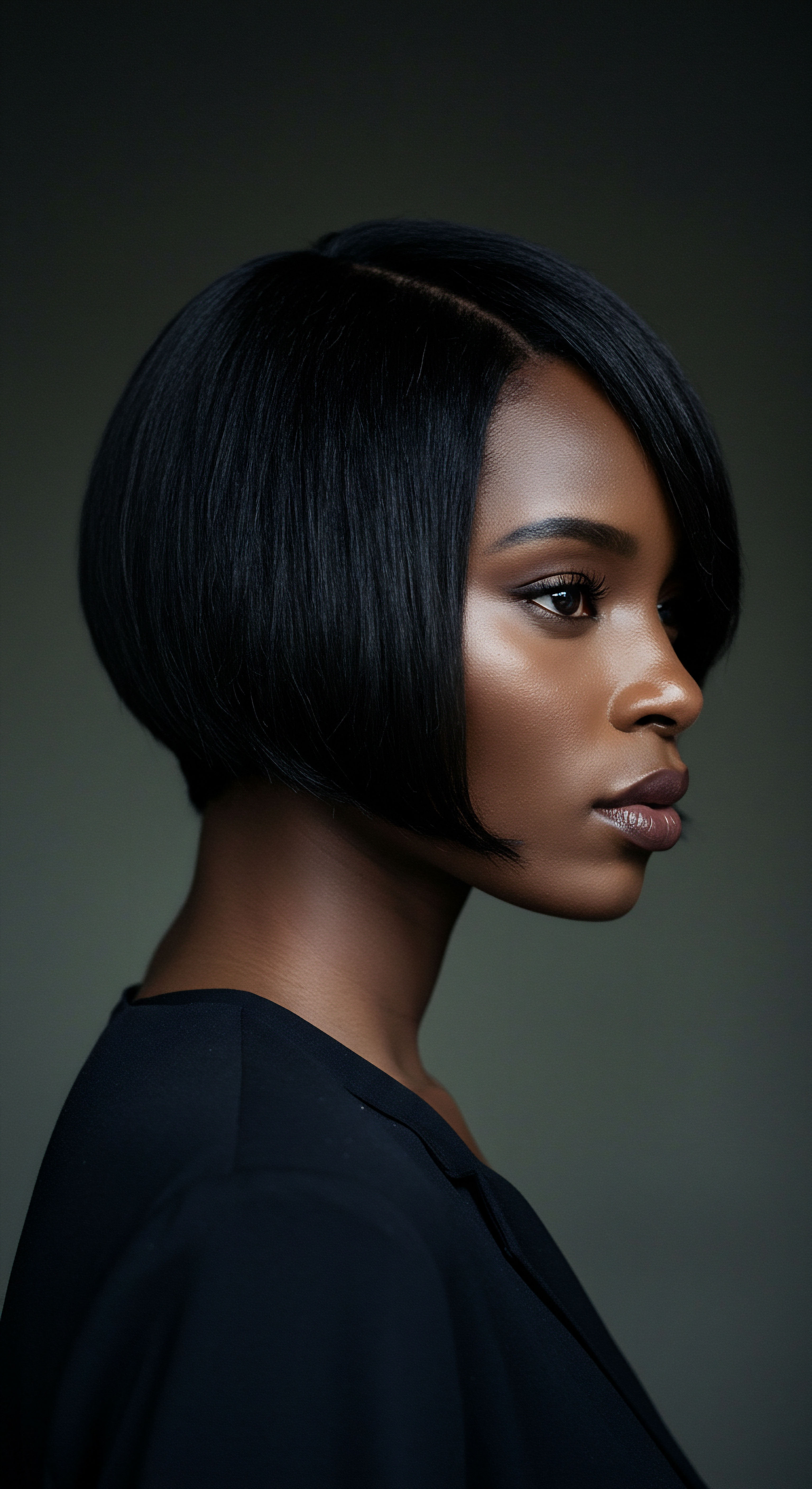
Roots
The very fabric of our being holds stories, and for many, those stories are intricately woven into the strands that crown our heads. Hair, a living testament to heritage and personal expression, often whispers tales of resilience and vulnerability. Yet, beneath the visible beauty and the myriad textures, there lies a delicate architecture, often overlooked until its integrity falters. This elemental understanding begins with the hair’s outermost layer, the cuticle, a guardian whose well-being dictates much of what we perceive as healthy, vibrant hair.
Consider the hair’s outermost layer, a delicate shield of overlapping scales, diligently guarding the inner core. This microscopic armor, the Hair Cuticle, comprises flattened, dead cells, resembling shingles on a roof. These scales lie flat and smooth when the hair is healthy, reflecting light with a serene sheen and allowing strands to glide past one another with minimal friction.
This orderly arrangement is paramount for preserving the hair’s internal structure, particularly the cortex, which provides strength and elasticity. Each cuticle cell is anchored by a complex network of proteins and lipids, a natural adhesive that keeps the protective layer intact.
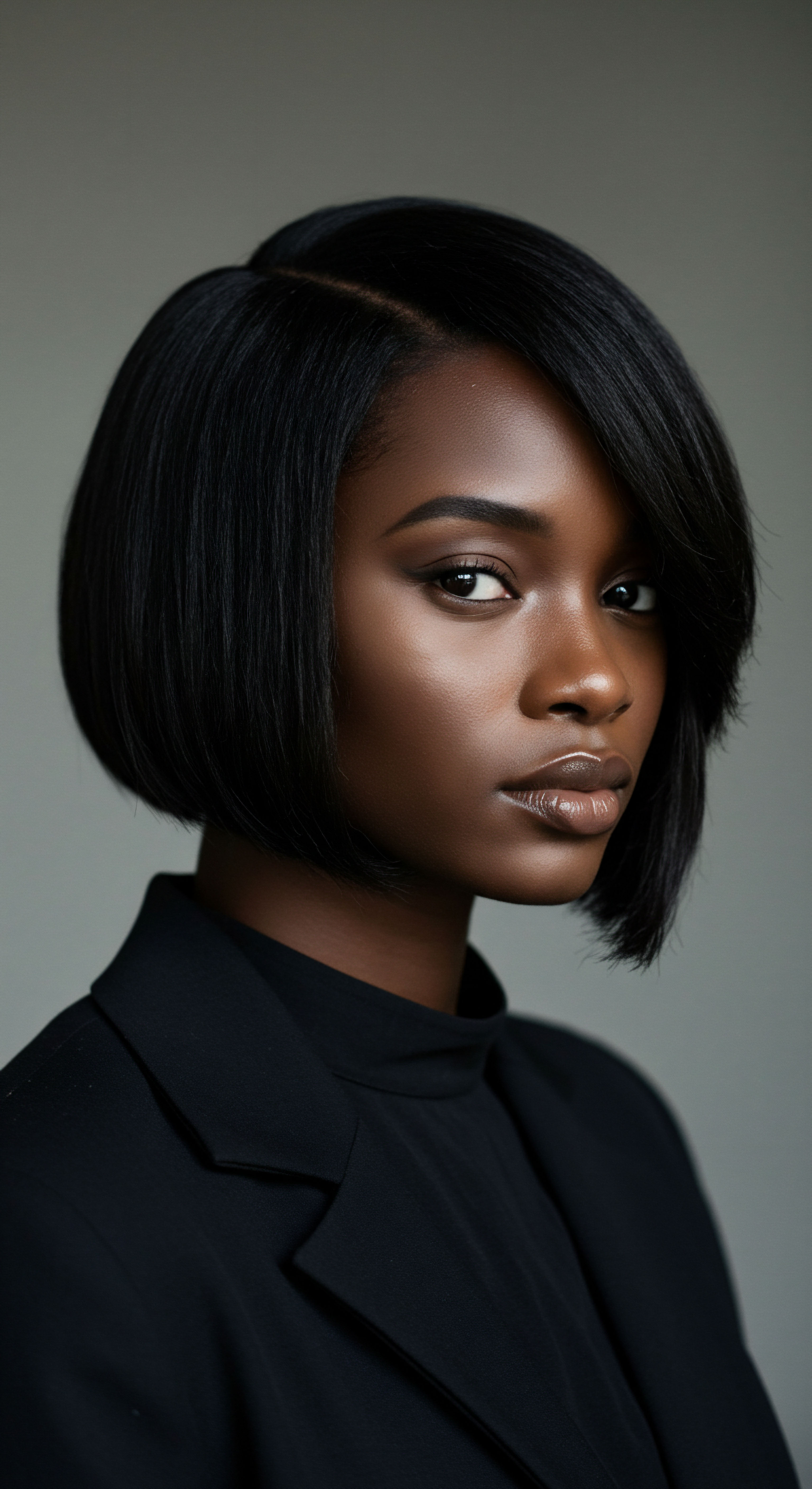
Hair’s Outer Shield The Cuticle’s Delicate Architecture
The architecture of the cuticle is a marvel of biological design. Typically, human hair possesses between six and ten layers of these translucent, flattened cells. Their arrangement, with the free edges pointing towards the hair tip, creates a unidirectional surface. This particular orientation is vital for preventing tangling and enabling smooth movement.
Beyond its physical barrier function, the cuticle also plays a subtle yet significant role in regulating the hair’s moisture content. It possesses a thin, water-repellent lipid layer on its surface, often called the F-layer, which acts as a natural sealant, minimizing water loss from the inner cortex and providing a measure of defense against external aggressors.
When this protective layer is compromised, the scales begin to lift, creating a rougher surface. This disruption allows moisture to escape more readily from the hair’s interior and permits external substances to penetrate. The visual cues of a distressed cuticle are familiar ❉ a dull appearance, a lack of shine, increased tangling, and a rough sensation to the touch. These subtle shifts are the hair’s early warnings, signaling that its primary defense mechanism is under strain.
The hair cuticle, a delicate shield of overlapping scales, is the primary guardian of a strand’s internal health and outward vitality.

Initial Breaches Early Signs of Distress
Even the most seemingly innocuous daily actions can begin to erode the cuticle’s serene surface. Mechanical friction, for instance, from vigorous towel drying, aggressive brushing, or even the repeated rubbing against pillows during sleep, can cause the cuticle scales to lift and chip away. Each small abrasion, while minor in isolation, contributes to a cumulative effect, slowly weakening the hair’s protective shell.
Similarly, the simple act of washing, particularly with water that is too hot or with harsh cleansing agents, can swell the cuticle, causing its scales to rise. While temporary, repeated swelling and deswelling cycles can strain the bonds holding the scales together, leading to long-term damage.

Can Our Hair’s Environment Affect Cuticle Integrity?
Our hair’s environment exerts a quiet yet persistent influence on its outermost layer. The very water we use for cleansing, for example, can be a silent contributor to cuticle distress. Hard water, prevalent in many regions, contains elevated levels of minerals like calcium and magnesium. These minerals do not simply rinse away; they adhere to the hair shaft, forming a subtle, abrasive film.
This mineral buildup can physically impede the smooth lying of cuticle scales, leading to a rougher texture and increased friction. Furthermore, these mineral deposits can react with hair products, diminishing their effectiveness and potentially creating residues that further weigh down the hair and make it more prone to tangling and breakage.
A compelling study published in the International Journal of Cosmetic Science examined the impact of hard water on hair. Researchers found that exposure to hard water led to a significant increase in the amount of mineral deposits on hair fibers, specifically calcium carbonate. This deposition resulted in a noticeable decrease in the hair’s mechanical strength and an increase in surface friction, directly correlating with a lifting and roughening of the cuticle layer. The study’s findings underscored how an everyday element, often overlooked, can systematically compromise the hair’s protective outer sheath, making it more vulnerable to further damage from styling and environmental factors.
Beyond water, the very air we breathe can also contribute to cuticle compromise. Atmospheric pollutants, such as particulate matter and ozone, carry reactive molecules that can trigger oxidative stress on the hair shaft. This process can degrade the proteins and lipids that form the cuticle, diminishing its structural integrity and its ability to act as a barrier.
Similarly, prolonged exposure to ultraviolet (UV) radiation from the sun can initiate photo-degradation of hair proteins, leading to a gradual erosion of the cuticle and a loss of hair’s natural luster and strength. These environmental elements, often invisible to the eye, exert a continuous, subtle assault on the hair’s delicate outer layer.
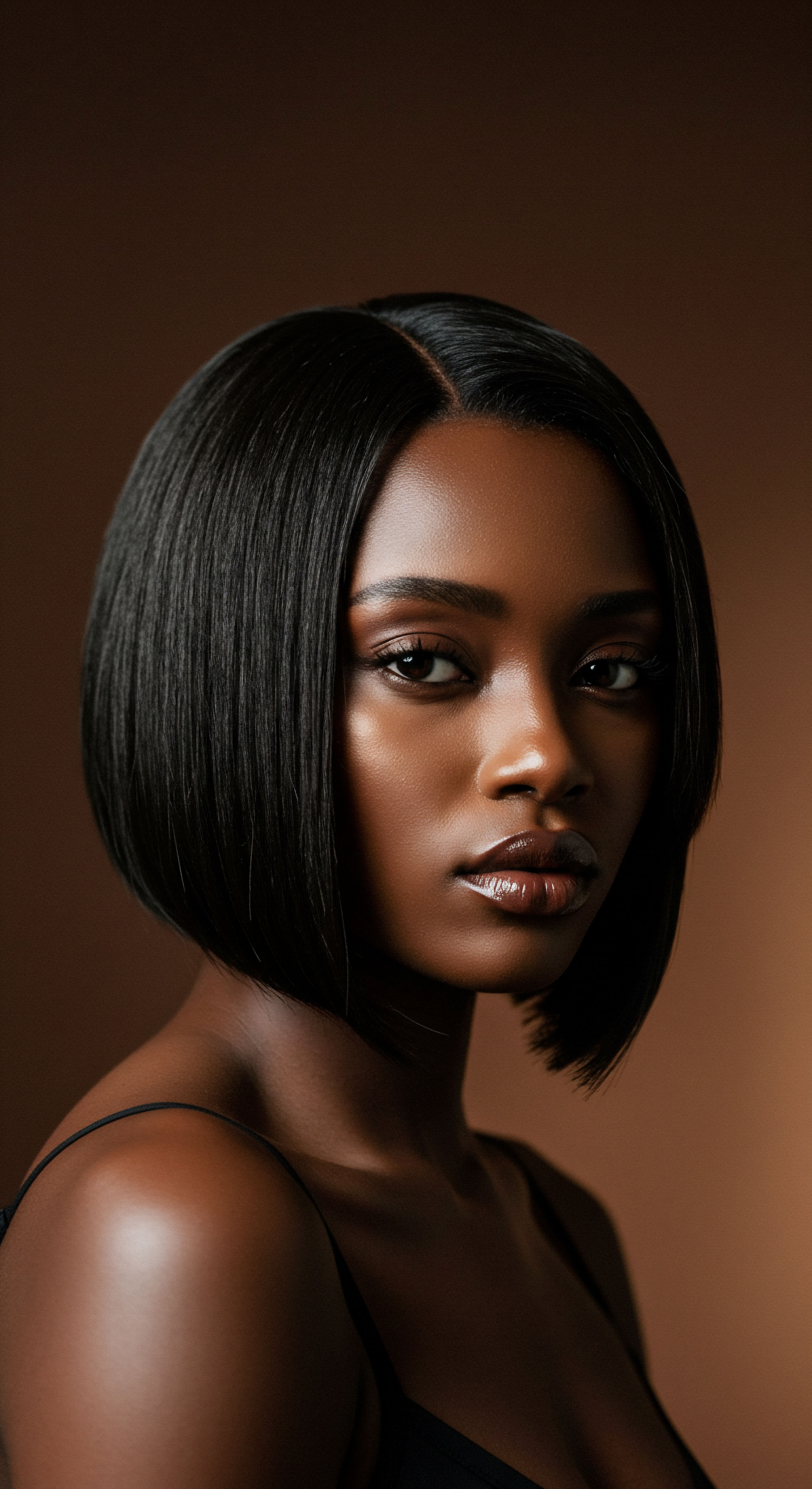
Ritual
The daily dance with our hair, a series of conscious and unconscious movements, products, and practices, shapes its very existence. From the gentle caress of a detangling brush to the warmth of a styling tool, each ritual holds the potential to either nourish or inadvertently compromise the hair’s delicate outer layer. Understanding these practical wisdoms, the rhythms of care we adopt, allows us to move beyond mere routine towards a more intentional interaction with our strands, safeguarding the cuticle’s serenity.
The seemingly simple acts of grooming hold a surprising power over the cuticle’s well-being. Consider the ritual of detangling. When hair is wet, its cuticle scales are naturally slightly raised and more susceptible to friction. Aggressive brushing or combing through tangles, particularly with tools not suited for textured hair, can act like a tiny rake, forcibly lifting and chipping away at these delicate scales.
The audible snap of a strand breaking is often the final lament of a cuticle that has been severely compromised, unable to withstand the strain. Similarly, the common practice of vigorous towel drying, rubbing strands between rough fibers, creates intense friction that can ruffle the cuticle, leaving it jagged and exposed. A gentle squeeze or pat, allowing excess water to absorb without abrasion, offers a kinder alternative.
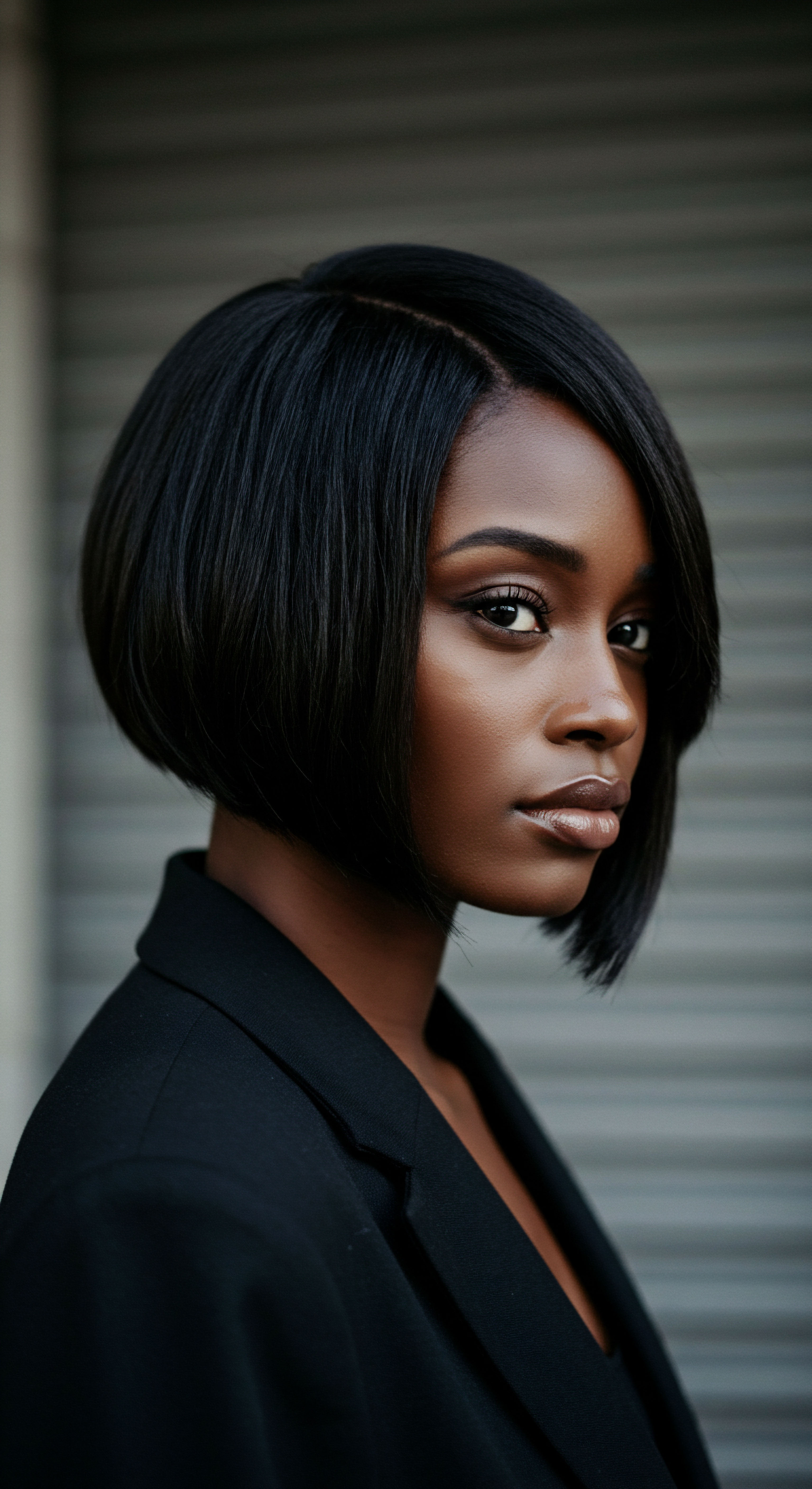
The Unseen Stressors of Daily Grooming
The choice of tools, too, plays a silent but significant role. Brushes with stiff bristles or combs with sharp seams can snag and tear at the cuticle, particularly on textured hair which naturally has more bends and curves where tangles can form. The art of detangling lies in patience and the right instrument ❉ a wide-tooth comb or a dedicated detangling brush, used on conditioned hair, working from ends to roots, allows scales to remain undisturbed. Even the materials we choose for our hair accessories, such as rough elastic bands, can create points of friction and stress on the cuticle where they grip the hair, leading to breakage over time.

Thermal Trials The Warmth That Wears
The allure of sleek, elongated strands often brings with it the challenge of thermal styling. Heat, while transformative, is a potent force for the hair cuticle. When flat irons, curling wands, or even blow dryers are applied at excessive temperatures or without adequate heat protection, the cuticle’s protein structure undergoes a profound alteration. The intense warmth causes the water within the hair shaft to rapidly boil, creating microscopic bubbles that disrupt the orderly arrangement of the cuticle scales and even the inner cortex.
This process, known as vacuolization, physically lifts and damages the cuticle, leaving it brittle, porous, and prone to splitting. The characteristic burnt smell is often the scent of denatured keratin, a clear sign of severe cuticle distress.
The duration of heat application and the number of passes over a section of hair also contribute to the degree of cuticle compromise. Multiple passes with a flat iron, especially on dry or unprotected hair, repeatedly subject the cuticle to extreme temperatures, compounding the damage with each glide. The goal with thermal styling should be to achieve the desired effect with the lowest effective temperature and the fewest possible passes, always ensuring a protective barrier is applied beforehand.
Everyday rituals, from detangling to thermal styling, subtly shape the cuticle’s resilience, requiring thoughtful practice to preserve its protective integrity.
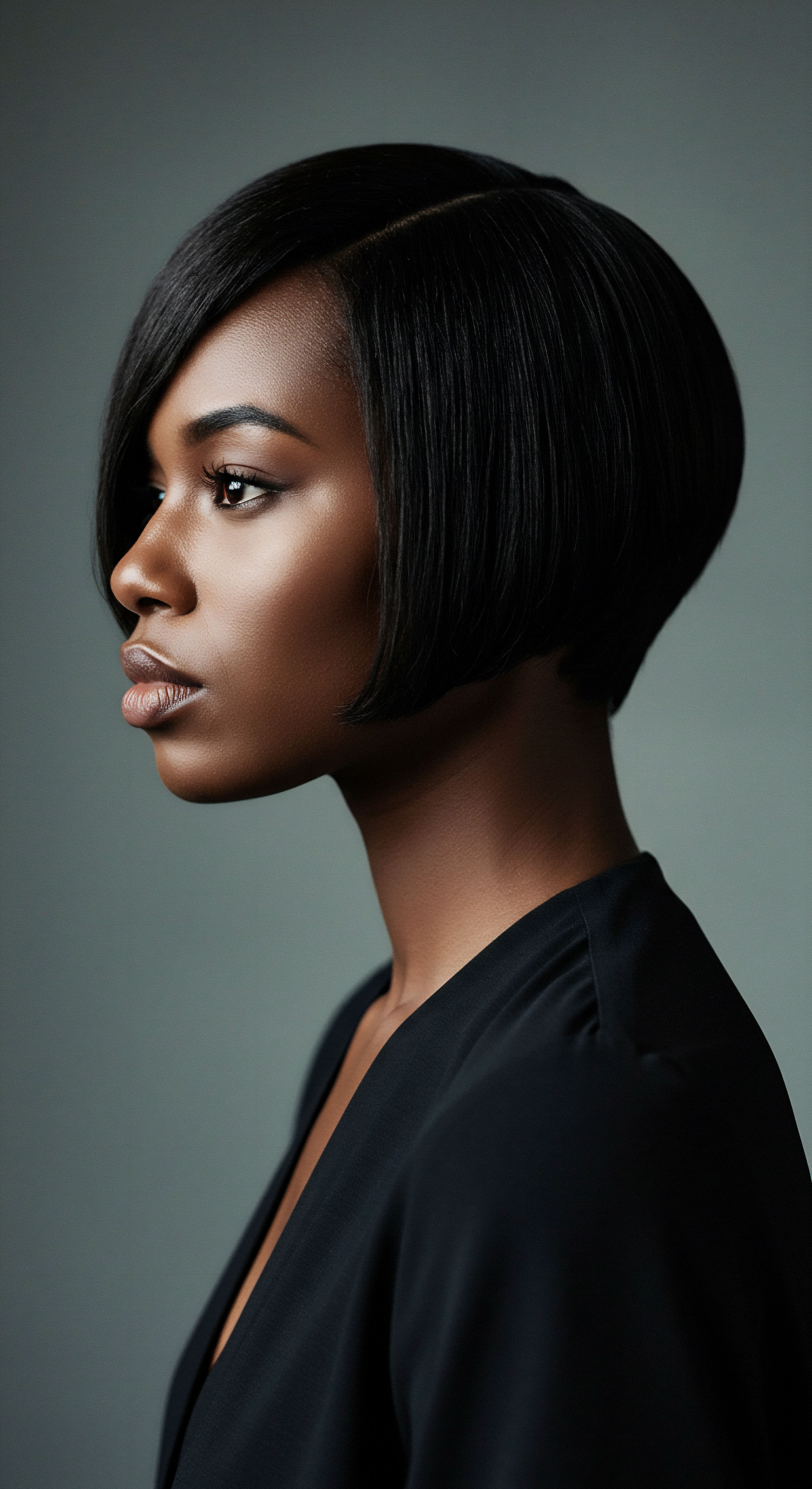
Product Pathways Chemical Whispers and Their Mark
The array of products we invite into our hair care regimens can also be silent contributors to cuticle damage. Certain cleansing agents, particularly those containing harsh sulfates, are designed to create a rich lather and strip away oils and dirt. While effective at cleansing, they can also strip away the hair’s natural lipid layer, including the protective F-layer on the cuticle. This leaves the cuticle exposed and vulnerable, its scales prone to lifting and increased porosity.
- Sulfate-Containing Shampoos can remove natural oils, leaving the cuticle exposed.
- High PH Products cause the cuticle scales to swell and lift, disrupting their smooth arrangement.
- Drying Alcohols in some styling products can dehydrate the hair, making the cuticle brittle.
Similarly, products with a high pH can cause the cuticle scales to swell and lift, disrupting their smooth, overlapping arrangement. This is often seen with certain relaxers or strong clarifying shampoos. While conditioning treatments aim to smooth the cuticle, improper rinsing can leave residues that attract dirt and lead to dullness, indirectly impacting cuticle health over time.
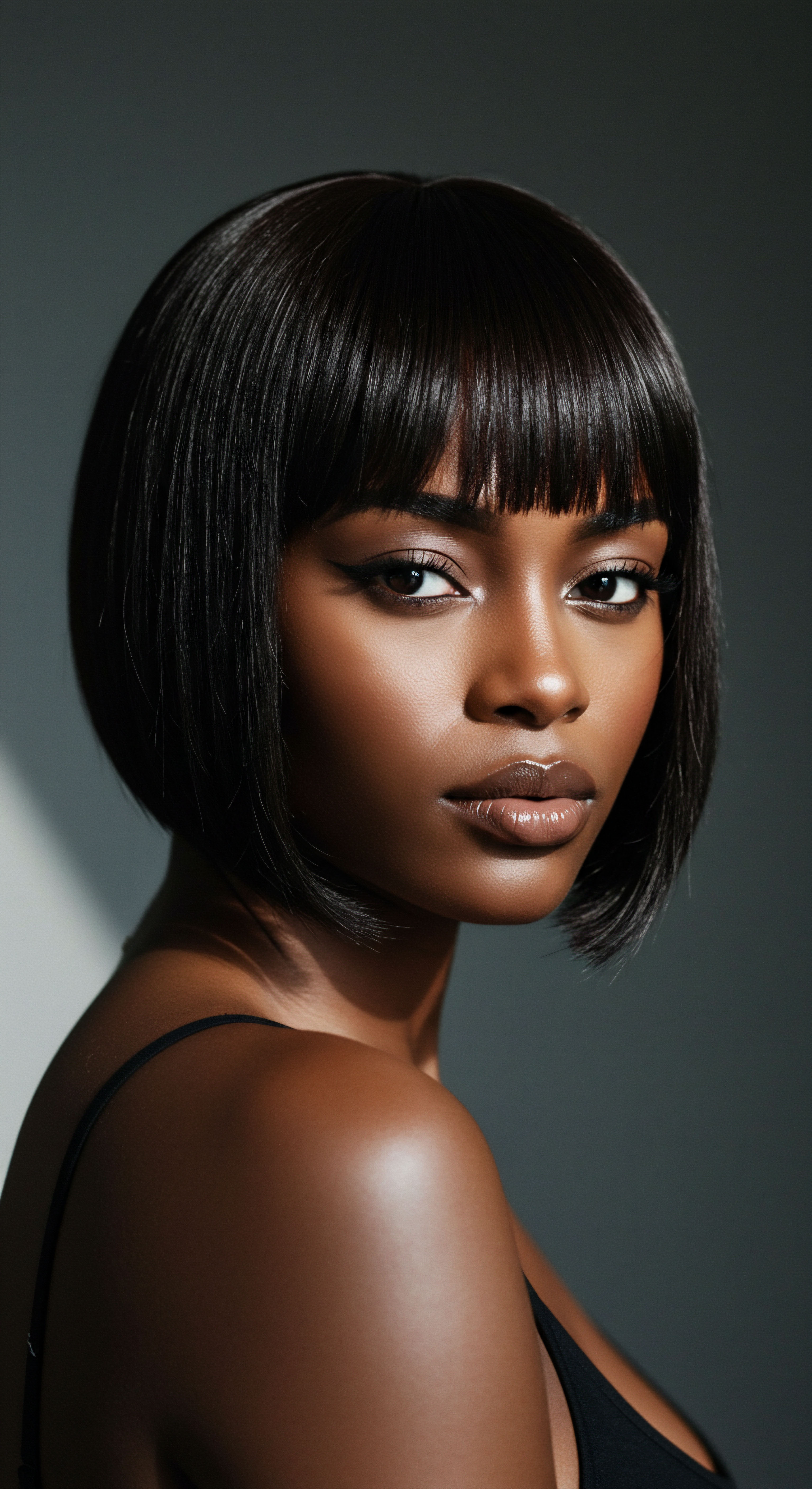
Why Do Some Cleansing Practices Leave Hair Feeling Stripped?
The sensation of hair feeling “stripped” after cleansing is a direct indicator of cuticle distress. This feeling arises when the cleansing agent has aggressively removed not only dirt and excess oil but also the protective lipid layer that coats the cuticle. When this happens, the cuticle scales, no longer held flat and lubricated by their natural oils, stand slightly raised. This elevated state creates friction between individual strands, leading to that characteristic squeaky, rough feeling.
The pH balance of cleansing products plays a significant role here. Hair and scalp are naturally acidic, typically ranging from pH 4.5 to 5.5. Products with a higher, more alkaline pH (above 7) cause the cuticle to swell and open, which can be beneficial for deep cleansing or chemical processing, but detrimental for regular washing. Repeated exposure to high pH products without subsequent re-acidification (through conditioners or rinses) leaves the cuticle in a perpetually raised state, making the hair vulnerable to moisture loss, tangling, and physical damage.
| Practice Vigorous Towel Drying |
| Mechanism of Cuticle Damage Physical abrasion, ruffling scales |
| Mitigation Strategy Gentle blotting with a microfiber towel or old t-shirt |
| Practice Aggressive Detangling |
| Mechanism of Cuticle Damage Forced lifting, chipping, and tearing of scales |
| Mitigation Strategy Use wide-tooth comb on conditioned hair, work from ends up |
| Practice High Heat Styling |
| Mechanism of Cuticle Damage Protein denaturation, vacuolization, physical lifting |
| Mitigation Strategy Use heat protectant, lowest effective temperature, fewer passes |
| Practice Harsh Shampoos |
| Mechanism of Cuticle Damage Stripping of natural lipids, excessive cuticle swelling |
| Mitigation Strategy Opt for sulfate-free, pH-balanced cleansers |
| Practice Understanding these daily interactions empowers us to make choices that preserve cuticle integrity. |

Relay
As we peel back the layers of understanding, the story of hair cuticle damage deepens, extending beyond daily routines into the realm where science, culture, and systemic influences converge. What appears on the surface as mere wear and tear often has roots in complex chemical transformations or subtle environmental aggressors that silently chip away at the hair’s very structure. This deeper contemplation invites us to connect the visible state of our strands to a broader tapestry of forces, revealing the profound interplay that shapes hair’s resilience.
The most dramatic transformations of hair, while often desired for aesthetic reasons, frequently come at a significant cost to the cuticle. Chemical treatments such as relaxers, permanent waves, and permanent hair dyes are designed to fundamentally alter the hair’s internal structure, and to do so, they must first gain entry. This entry point is the cuticle.

Chemical Alterations A Structural Remaking
Consider the process of chemical relaxing, a widely adopted practice within textured hair communities for achieving straighter styles. Alkaline chemicals, such as sodium hydroxide or guanidine hydroxide, are applied to the hair. These potent compounds cause the cuticle scales to swell dramatically and lift, allowing the active ingredients to penetrate the cortex. Once inside, these chemicals break the disulfide bonds, the very backbone of the hair’s protein structure, permanently altering its shape.
While subsequent neutralizing and conditioning steps aim to reseal the cuticle, the initial forceful opening and the internal restructuring leave the cuticle permanently compromised. It may never fully return to its original smooth, tightly sealed state, leading to increased porosity and vulnerability.
Similarly, permanent hair coloring involves a two-step chemical dance ❉ an alkaline agent (often ammonia) opens the cuticle, and then hydrogen peroxide acts as an oxidizer, lightening the natural pigment while allowing new color molecules to deposit within the cortex. Each coloring session, especially if performed frequently or with high developer volumes, reiterates this cuticle-lifting process. Over time, the repeated swelling and forced entry can lead to permanent cuticle damage, manifesting as chronic dryness, brittleness, and a rough texture that resists smoothness.
- Relaxers forcibly open cuticle scales to break internal bonds, leaving the cuticle weakened.
- Permanent Hair Dyes use alkaline agents and oxidizers to lift cuticle and deposit color, causing cumulative damage.
- Perms chemically restructure hair, requiring cuticle opening and re-sealing, often resulting in lasting porosity.
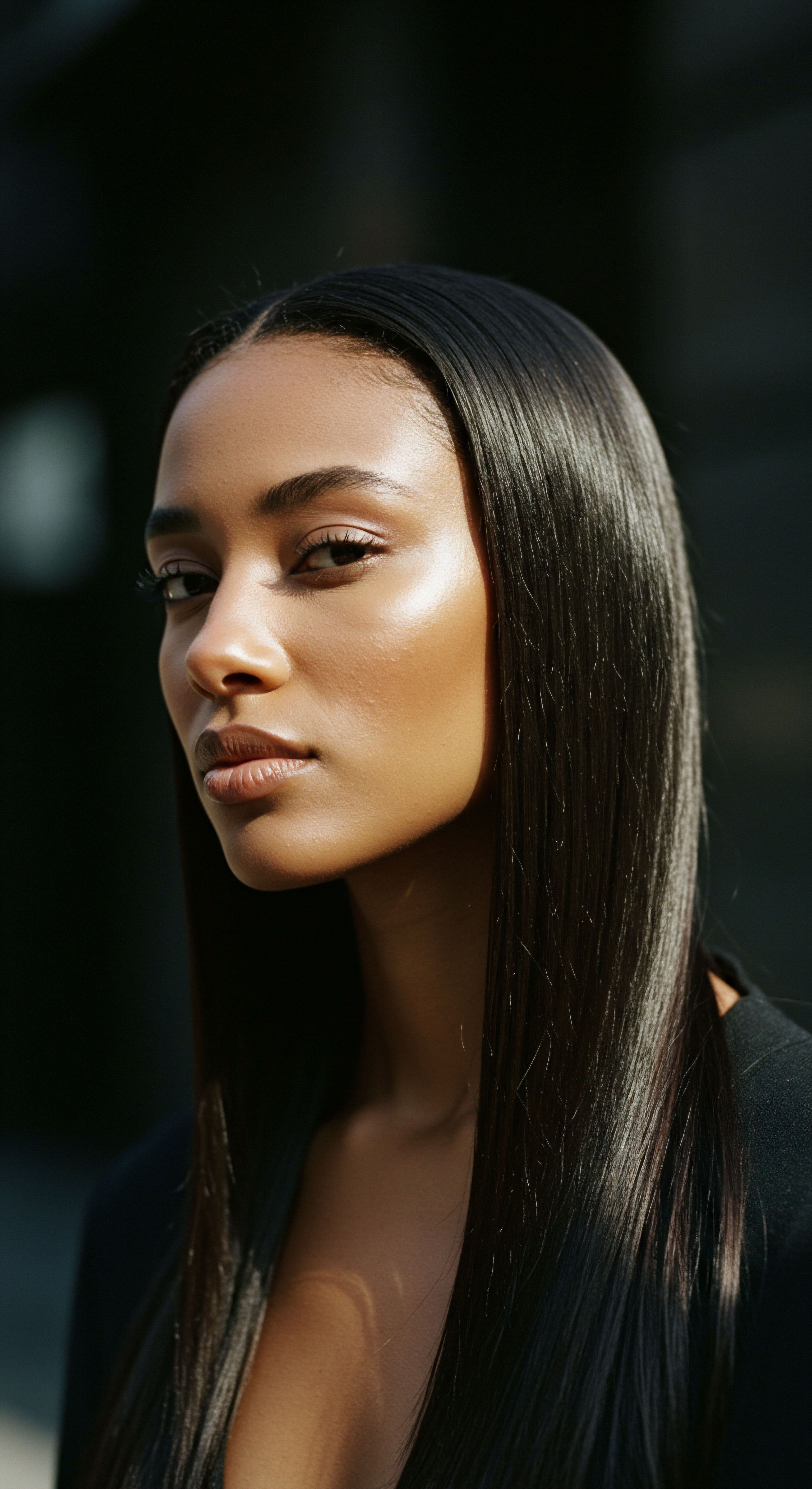
The Unseen Hand of Environment Beyond Daily Exposure
Beyond the immediate impact of styling tools and chemical applications, our hair is continuously subjected to a barrage of environmental stressors that subtly yet persistently degrade the cuticle. Ultraviolet (UV) radiation from the sun, for instance, is a silent assailant. Both UVA and UVB rays can induce photochemical degradation of hair proteins, particularly the keratin within the cuticle.
This process can lead to the formation of free radicals, which then proceed to break down the peptide bonds and disulfide bonds, causing the cuticle scales to lift, crack, and even detach. The result is a dull, brittle strand with diminished mechanical strength and increased porosity.
Air pollution, a ubiquitous concern in urban environments, also plays a role. Particulate matter, heavy metals, and gaseous pollutants like ozone carry reactive species that can settle on the hair shaft. These substances can catalyze oxidative reactions, further damaging the cuticle’s lipid layer and protein structure.
The cumulative effect of such exposure can leave the hair feeling gritty, looking lifeless, and more susceptible to further damage from styling or washing. Even seemingly benign elements like chlorine in swimming pools, or the salt from ocean water, can strip the cuticle’s protective oils and cause it to swell, leaving it vulnerable to subsequent damage.
Chemical transformations and environmental aggressors silently erode the cuticle, revealing a profound interplay shaping hair’s resilience.

Beyond the Strand How Does Internal Wellness Shape Hair’s Outer Layer?
While much attention rightly focuses on external factors, the vitality of our hair, including the integrity of its cuticle, is also a reflection of our internal wellness. Hair is, after all, a non-essential tissue, meaning the body prioritizes nutrient delivery to vital organs first. This implies that nutritional deficiencies can manifest in hair quality, even affecting the formation and health of the cuticle as it emerges from the follicle.
For example, a lack of essential amino acids, which are the building blocks of keratin, or deficiencies in vitamins like biotin, zinc, or iron, can lead to the production of weaker hair fibers. These fibers may possess a less robust cuticle, one that is inherently more prone to damage from even minor external stressors. Chronic stress, too, can indirectly impact hair health by disrupting the body’s hormonal balance and nutrient absorption, potentially leading to telogen effluvium (excessive shedding) and a general decline in hair quality, including the resilience of the cuticle.
Systemic health conditions, such as thyroid disorders or autoimmune diseases, can also profoundly influence hair growth cycles and the structural integrity of the hair shaft, making the cuticle more fragile and susceptible to compromise. The outer appearance of our hair, therefore, often serves as a quiet messenger of our inner state.
The interplay of these internal and external factors creates a complex landscape for cuticle health. A hair strand that emerges from the scalp already compromised due to nutritional deficiencies will be far more vulnerable to the cumulative effects of chemical treatments, heat styling, and environmental exposure. The damage then becomes a multi-layered narrative, with internal vulnerabilities amplifying the impact of external aggressors.
| Category Chemical Processes |
| Specific Factor Hair Relaxers |
| Mechanism of Damage Alkaline agents forcibly open cuticle, break disulfide bonds. |
| Category |
| Specific Factor Permanent Dyes |
| Mechanism of Damage Ammonia lifts cuticle, peroxide degrades melanin and forms new color. |
| Category Environmental Exposure |
| Specific Factor UV Radiation |
| Mechanism of Damage Photo-degradation of keratin, free radical formation, cuticle erosion. |
| Category |
| Specific Factor Air Pollution |
| Mechanism of Damage Particulate matter and ozone cause oxidative stress on lipids and proteins. |
| Category Internal Wellness |
| Specific Factor Nutritional Deficiencies |
| Mechanism of Damage Impaired keratin formation, weaker cuticle structure. |
| Category |
| Specific Factor Chronic Stress |
| Mechanism of Damage Hormonal imbalances, reduced nutrient delivery to follicles. |
| Category Damage to the hair cuticle stems from a complex interplay of chemical, environmental, and internal influences. |

Reflection
The journey through the delicate world of the hair cuticle reveals a profound truth ❉ the beauty and resilience of our strands are not a matter of chance, but a constant conversation between our intentional care and the forces that shape us. To truly nurture textured hair is to cultivate an intimate understanding of its innermost workings and its outermost shield. It is a continuous learning, a gentle observation, and a quiet commitment to practices that honor its unique structure. May our hands, our choices, and our understanding always move with a reverence for the intricate life of our hair, allowing its inherent radiance to truly shine.

References
- R. B. Hall, L. A. Hall, & S. K. Hall. (2012). “Effect of Hard Water on Hair.” International Journal of Cosmetic Science, 34(3), 253-257.
- Robbins, C. R. (2012). Chemical and Physical Behavior of Human Hair (5th ed.). Springer.
- Gopinath, H. & Singh, R. (2018). Hair Science and Technology. Apple Academic Press.
- Khumalo, N. P. & Gumedze, F. (2016). “The Trichoscopic Features of Traction Alopecia.” Journal of the American Academy of Dermatology, 75(6), 1144-1150.
- Trueb, R. M. (2016). “Oxidative Stress in Ageing of Hair.” International Journal of Trichology, 8(1), 6-11.
- Dawber, R. P. R. & Van Neste, D. (2000). Hair and Scalp Disorders ❉ Common Problems and Their Management. CRC Press.
- Marti, M. & Barba, C. (2020). Hair Care ❉ From Physiology to Formulation. CRC Press.
- Gavazzoni Dias, M. F. R. (2015). “Hair Cosmetics ❉ An Overview.” International Journal of Trichology, 7(1), 2-15.